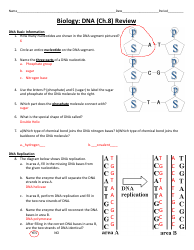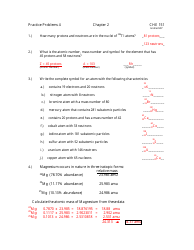Classification Test Study Guide With Answer Key - Biology II Cp, Loudoun County Public Schools
The Classification Test Study Guide With Answer Key for Biology II Cp is a study resource used by students in Loudoun County Public Schools to prepare for a test on the classification of organisms in biology. It provides practice questions and answers to help students review the material covered in the class.
The Classification Test Study Guide with Answer Key for Biology II CP at Loudoun County Public Schools is typically filed by the biology teacher or the school administration.
FAQ
Q: What is the purpose of the Classification Test?
A: The purpose of the Classification Test is to assess the student's understanding of biological classification.
Q: What is Biology II Cp?
A: Biology II Cp refers to the Biology II course offered at Loudoun County Public Schools.
Q: What does Cp stand for in Biology II Cp?
A: Cp stands for College Preparatory.
Q: What is biological classification?
A: Biological classification is the process of organizing and categorizing living organisms based on their characteristics.
Q: Why is biological classification important?
A: Biological classification is important because it helps scientists study and understand the diversity of life on Earth.
Q: What are the main taxonomic levels in biological classification?
A: The main taxonomic levels are kingdom, phylum, class, order, family, genus, and species.
Q: What is the purpose of the Linnaean system of classification?
A: The purpose of the Linnaean system of classification is to provide a standardized way of naming and classifying organisms.
Q: What is the difference between classification and taxonomy?
A: Classification is the process of categorizing organisms, while taxonomy is the science of naming and classifying organisms.
Q: What are the three domains of life?
A: The three domains of life are Archaea, Bacteria, and Eukarya.
Q: What is binomial nomenclature?
A: Binomial nomenclature is the two-part naming system used in biological classification, consisting of the genus and species names.
Q: What is a dichotomous key?
A: A dichotomous key is a tool used in biological identification that consists of a series of choices that lead to the identification of an organism.
Q: What is the difference between a genus and a species?
A: A genus is a group of related species, while a species is the most specific level of classification.
Q: What is the scientific name for humans?
A: The scientific name for humans is Homo sapiens.
Q: What is the classification of animals?
A: Animals are classified into various phyla, such as Chordata, Arthropoda, and Mollusca, based on their characteristics.
Q: What is the classification of plants?
A: Plants are classified into various divisions, such as Bryophyta, Pteridophyta, and Magnoliophyta, based on their characteristics.
Q: What is the classification of fungi?
A: Fungi are classified into various phyla, such as Ascomycota, Basidiomycota, and Zygomycota, based on their characteristics.
Q: What is the classification of protists?
A: Protists are classified into various phyla, such as Euglenozoa, Alveolata, and Amoebozoa, based on their characteristics.
Q: What is the classification of bacteria?
A: Bacteria are classified into various phyla, such as Firmicutes, Proteobacteria, and Actinobacteria, based on their characteristics.
Q: What is the classification of archaea?
A: Archaea are classified into various phyla, such as Crenarchaeota, Euryarchaeota, and Thaumarchaeota, based on their characteristics.











